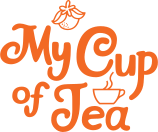Tea is more than a soothing beverage—it is a cultural symbol, a source of inspiration, and even a medium for creative expression. Across centuries and continents, tea has found its way into paintings, poetry, ceramics, photography, and modern installations. Today, artists and tea lovers alike are rediscovering the beauty of this ancient drink and the many ways it can be transformed into art.
If you’re curious about how tea and art intersect, this guide will walk you through the fascinating ways tea influences artistic traditions, serves as an actual art material, and inspires creators around the world.
Tea as a Symbol in Visual Art
From Chinese ink paintings to European still lifes, tea has long held a place on the artist’s canvas. In Eastern art, tea is often depicted as a symbol of harmony, mindfulness, and connection to nature. The Japanese tea ceremony, for example, has inspired centuries of paintings, woodblock prints, and calligraphy that celebrate simplicity and ritual.
In Western art, tea became prominent in 17th- and 18th-century still lifes. Dutch painters, who often showcased global trade goods, included tea sets, porcelain teacups, and steaming kettles to represent wealth, hospitality, and the meeting of cultures. These timeless works continue to remind us that tea is more than a drink—it’s a reflection of history and society.
Tea Staining and Painting
One of the most innovative uses of tea in art is as a medium itself. Tea staining is a popular technique where brewed tea is applied to paper, canvas, or fabric to create subtle, earthy tones. Artists often use black tea or green tea for their unique color variations.
-
Tea as Ink: Loose-leaf tea can be steeped into a rich liquid pigment, similar to watercolor. Artists use it to sketch landscapes, portraits, or abstract works. The natural fading of tea over time adds an organic, living quality to the piece.
-
Fabric and Paper Design: Textile artists use tea to dye fabrics in soft beige and brown hues, giving them an antique or vintage look. Similarly, bookbinders and crafters stain pages with tea to create aged journals or handmade cards.
This eco-friendly technique not only minimizes chemical use but also connects the artwork to the earth and the centuries-old tradition of tea.
Tea in Ceramics and Pottery
Tea and ceramics have been inseparable for centuries. Artists who craft teapots, cups, and bowls often blur the line between functionality and sculpture. Japanese raku pottery, for example, was developed specifically for the tea ceremony, combining beauty, imperfection, and symbolism.
Modern ceramic artists also draw inspiration from tea culture. They create teaware with bold glazes, experimental shapes, and intricate carvings that make the act of drinking tea an aesthetic experience. Collectors and enthusiasts often see these works not just as tools, but as standalone art pieces.
Tea-Inspired Literature and Poetry
Beyond the visual arts, tea has also been immortalized in words. Writers across the world have celebrated tea in poetry, essays, and novels. Chinese poets of the Tang dynasty often praised tea as a companion for meditation, while modern authors use tea as a metaphor for comfort, ritual, or reflection.
Haiku and other short poetic forms especially highlight the intimate connection between tea, nature, and mindfulness. In this way, literature keeps alive the quiet, contemplative essence of tea culture.
Tea in Contemporary and Digital Art
Today’s artists are finding new ways to incorporate tea into modern artistic practices. Installations may include tea leaves scattered across gallery floors, walls dyed with tea, or interactive tea rituals as performance art. Digital artists even use the motif of teacups and steaming kettles to symbolize pause, wellness, and human connection in an otherwise fast-paced, screen-heavy world.
The blending of tradition with modernity ensures that tea remains relevant not only in the kitchen but also in creative spaces.
Why Tea and Art Belong Together
Tea embodies qualities that resonate deeply with art: patience, ritual, and sensory experience. Both tea drinking and art-making encourage slowing down, savoring details, and appreciating beauty. Whether it’s a hand-thrown teapot, a tea-stained canvas, or a photograph of a steaming cup, the union of tea and art reminds us of life’s most cherished moments.
Final Thoughts
The relationship between tea and art is rich, diverse, and ever-evolving. From traditional ink paintings to modern installations, from tea-dyed fabrics to poetic verses, tea continues to inspire artists across mediums and cultures. For tea enthusiasts, exploring these artistic expressions offers a deeper appreciation for the drink they already love. For artists, tea provides both a subject and a tool that bridges history, culture, and creativity.
Next time you sip a cup of tea, consider the centuries of artistry behind it—and perhaps, find inspiration to create something yourself.














